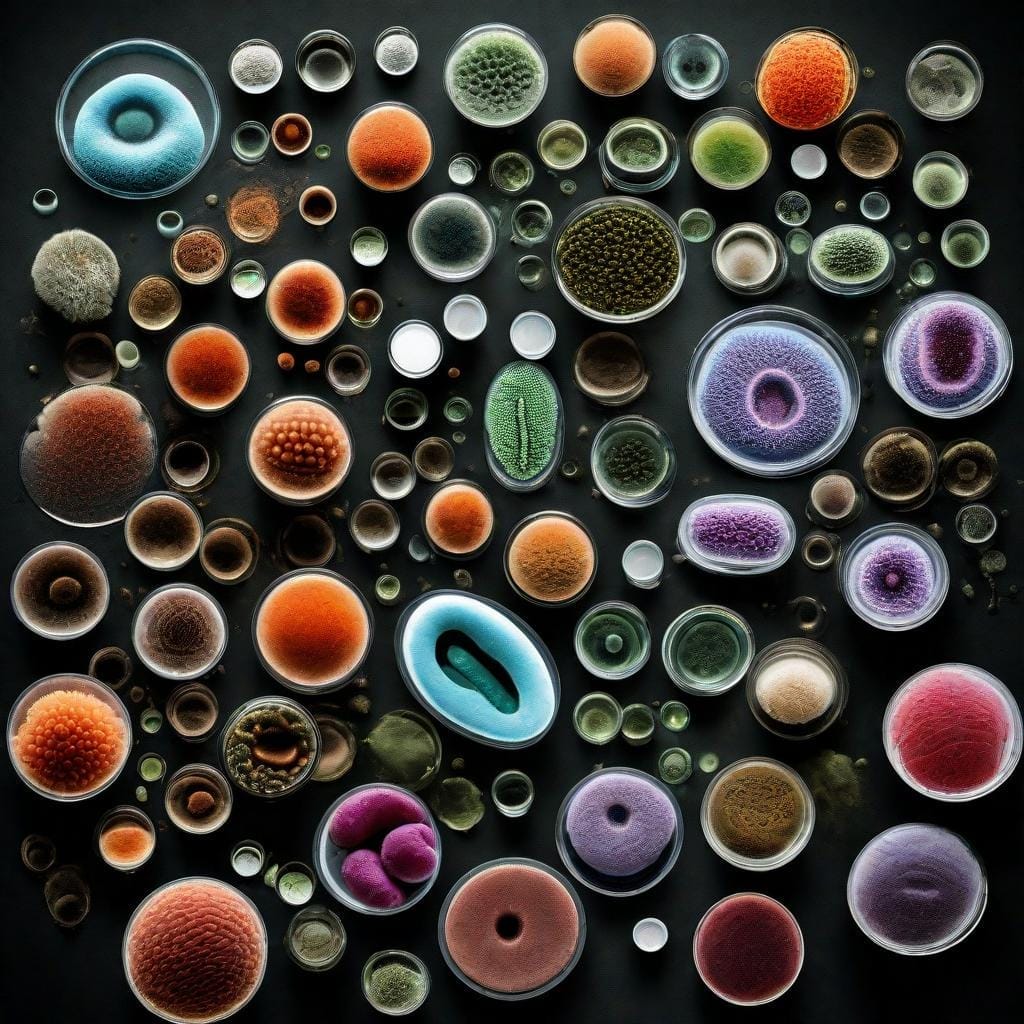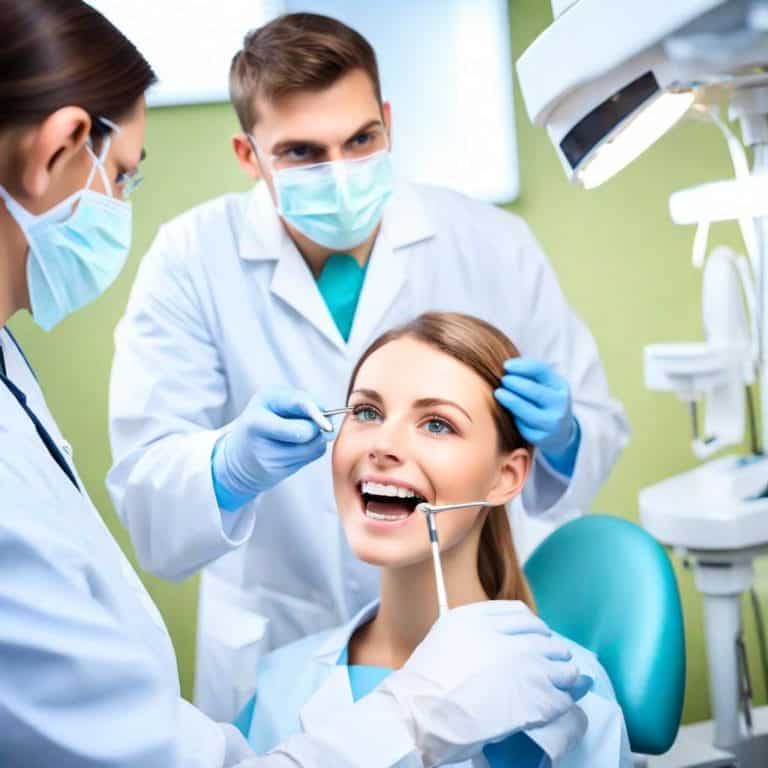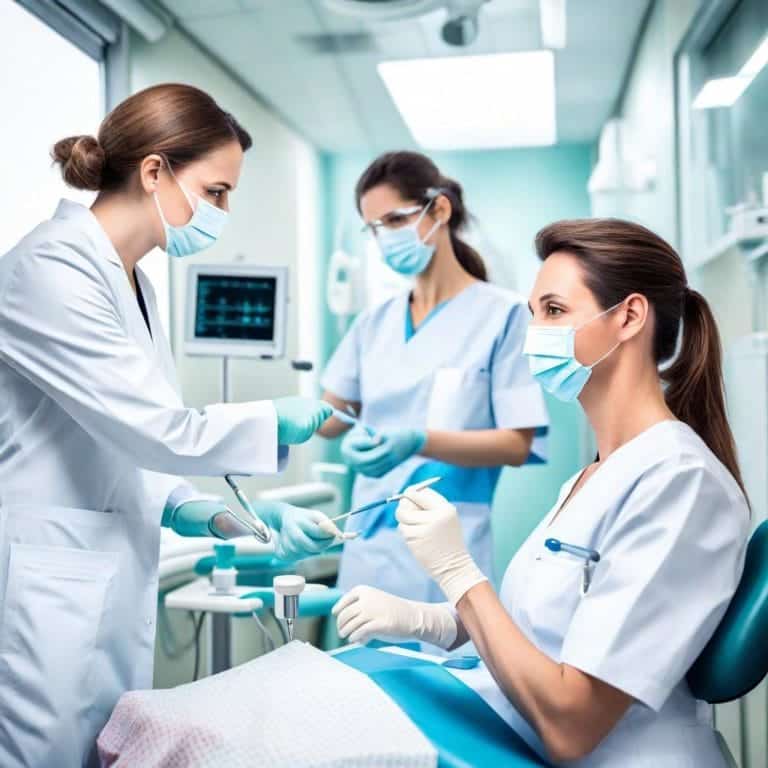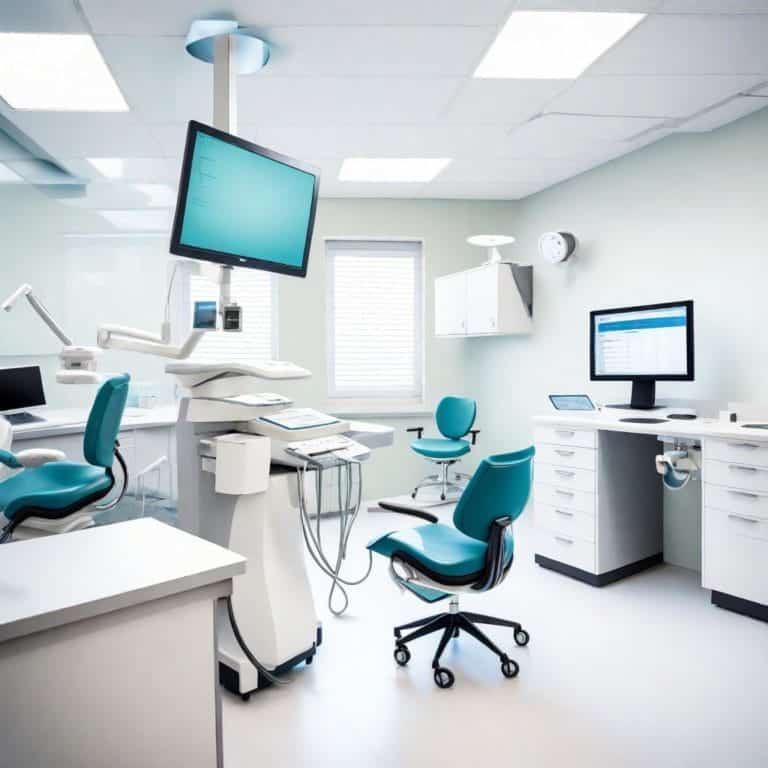Microbiology and Hygiene in Dentistry:
Pillars for Patient Safety
Introduction
Dentistry, a profession dedicated to oral health, cannot ignore the crucial importance of microbiology and hygiene. These two elements are at the heart of safe and effective practices, ensuring not only the health of patients but also that of practitioners. In this article, we will explore the foundations of microbiology in dentistry and the best hygiene practices that ensure quality care and infection prevention.
Foundations of Dental Microbiology
Microbiology plays an essential role in dentistry because it helps us understand the various microorganisms present in the oral cavity. These organisms can be pathogens responsible for cavities, periodontal disease, or infections. A thorough knowledge of these microorganisms and their pathogenic mechanisms is essential for dentists, in order to establish effective prevention and treatment strategies.
Principles of Hygiene in Dentistry
Hygiene practices in dentistry are numerous and varied, ranging from sterilization of instruments to disinfection of work surfaces. These practices are crucial to prevent the transmission of infections between patients and healthcare professionals. Standardized and rigorous procedures, such as the use of single-use equipment or pressurized steam sterilization, are essential measures in any dental clinic.
Innovations and Advancements
Modern dentistry benefits from significant technological advances. More efficient sterilization devices, ultrasonic cleaning techniques, and infection tracking methods are some examples of innovations improving dental practice. These advanced technologies help maintain a safe and aseptic clinical environment.
Case Studies and Real Examples
Practical cases illustrate the importance of microbiology and hygiene in dentistry. For example, a case study of a post-treatment infection outbreak in a dental clinic can reveal how lapses in hygiene practices can have serious consequences.
Conclusion
In summary, microbiology and hygiene are fundamental pillars of modern dentistry. Their rigorous application is essential to ensure the safety of patients and healthcare professionals. With continued technological advancements, these areas continue to evolve, promising even safer and more effective dental care in the future.
Topics covered during the training
Microbiology is a branch of science that studies microorganisms.
Microbiology
- Introduction to Microbiology : Overview of the field of study, its history and its importance in science and medicine.
- Classification of Microorganisms : Overview of different types of microorganisms, including bacteria, viruses, fungi, and protozoa.
- Structure and Function of Microorganisms : Details on the morphology, physiology and genetics of microorganisms.
- Microbial Metabolism : Understanding the biochemical processes that support the life of microorganisms.
- Microbial Genetics : Study of genetic variation, mutation, and genetic exchange in microorganisms.
- Microbial Ecology : Interaction of microorganisms with their environment and their role in ecosystems.
- Pathogenicity and Immunology : Mechanisms by which microorganisms cause disease and host immune responses.
- Microbiology Techniques : Culture methods, identification and analysis of microorganisms.
- Applied Microbiology : Use of microorganisms in industry, agriculture, biotechnology and research.
- Antibiotics and Antimicrobial Resistance : Use of antibiotics and the problem of microbial resistance.
- Microbiology and Public Health : Role of microbiology in the control of infectious diseases and food safety.
Health and safety in a dental clinic is paramount to protect both patients and staff.
Health and Safety in the Dental Clinic
- Basic Principles of Health and Safety in the Dental Clinic : Introduction to essential standards and practices for maintaining a safe environment.
- Infection Control and Sterilization : Protocols and techniques for disinfection, sterilization and prevention of cross-infection.
- Risk Management and Accident Prevention : Strategies for identifying and minimizing risks in the dental work environment.
- Personal Protective Equipment (PPE) : Appropriate use of PPE to protect staff and patients.
- Medical Waste Management : Procedures for the treatment and safe disposal of medical waste and hazardous materials.
- Ergonomics in the Dental Clinic : Practices to reduce the risk of musculoskeletal disorders among dental staff.
- Emergency Preparedness and Response : Emergency procedures for medical situations and other clinic emergencies.
- Mental Health and Well-being at Work : Strategies to support the mental health and well-being of clinic staff.
- Safety Training and Awareness : Continuing education programs to maintain high health and safety standards.
- Legislation and Regulatory Compliance : Understanding of laws and regulations relating to health and safety in the dental environment.
- Accidental Exposure Management : Protocols in case of accidental exposure to pathogens or chemicals.
Infection prevention and control (IPC) are crucial aspects in healthcare settings to reduce the spread of infectious diseases.
Infection Prevention and Control (IPC)
- IPC Fundamentals : Introduction to the key concepts, importance and goals of infection prevention and control.
- Pathogens and Modes of Transmission : Understanding of infectious agents and the different routes of transmission of infections.
- Hand Hygiene and Asepsis : Hand hygiene techniques and aseptic practices to reduce the transmission of infections.
- Use of Personal Protective Equipment (PPE) : Proper selection, use and disposal of PPE for protection against infections.
- Cleaning, Disinfection and Sterilization : Protocols and best practices for cleaning and disinfecting surfaces and equipment.
- Biomedical Waste Management : Safe procedures for the disposal of potentially infectious waste.
- Prevention of Healthcare Associated Infections : Strategies to reduce nosocomial infections and infections linked to medical procedures.
- Infection Monitoring and Reporting : Infection surveillance methods and reporting procedures.
- Staff Training and Awareness : Continuing education programs for staff on PCI practices.
- PCI Policies and Legislation : Regulatory framework and policy guidelines governing infection prevention and control.
- Planning and Response to Epidemics : Preparation and management of epidemics or infectious outbreaks.
- Role of Technology and Innovation in PCI : Application of advanced technologies and innovations to improve PCI.
Other parts of the training









